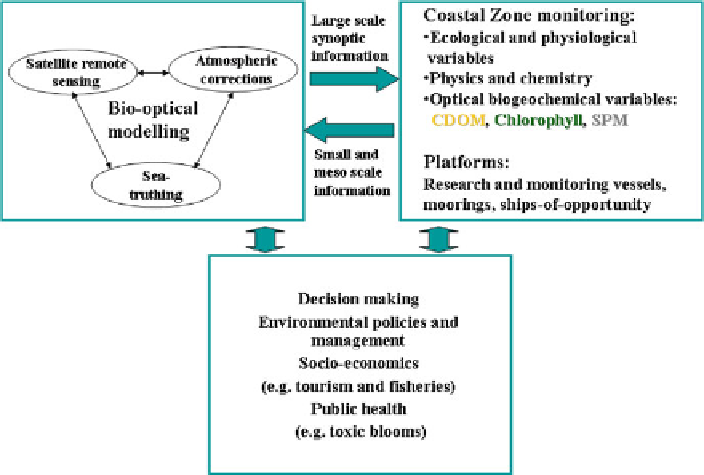Geoscience Reference
In-Depth Information
20.1.7 A Multiscale Approach to Monitoring
The EC Water Framework Directive (WFD) requires the assessment of the eco-
the quality elements that must be determined according to the WFD include phyto-
plankton biomass, the amount of dissolved carbon, the frequency, and intensity of
blooms and water transparency, all of which can be assessed by combining ocean
colour remote sensing with in situ observational techniques.
Traditional monitoring programs in oceanography consist of water samples taken
regularly at defined sites with standardized methods. The monitoring sites are usu-
ally sampled at different depths in order to get vertically resolved information. In
order to protect the marine environment, strong emphasis is now placed on the
complex biological-ecological status instead of on purely physiochemical parame-
ters. The conceptual model in Fig.
20.4
illustrates a multiscale monitoring approach
ocean colour remote sensing provide synoptic information of the whole Baltic Sea
basin. Optical in situ data, autonomous in situ measurements on moorings or on
light houses, as well as on ships-of-opportunities (ferries) are combined with opti-
cal models to interpret and validate the information from remote sensing data.
Dedicated sea-truthing campaigns provide the in situ data for the development of
local algorithms and retrieval methods regionally adapted to the Baltic Sea and for
the validation of satellite data. Remotely measured radiances are interpreted with
specific retrieval algorithms, and bio-optical parameters are derived. For local point

